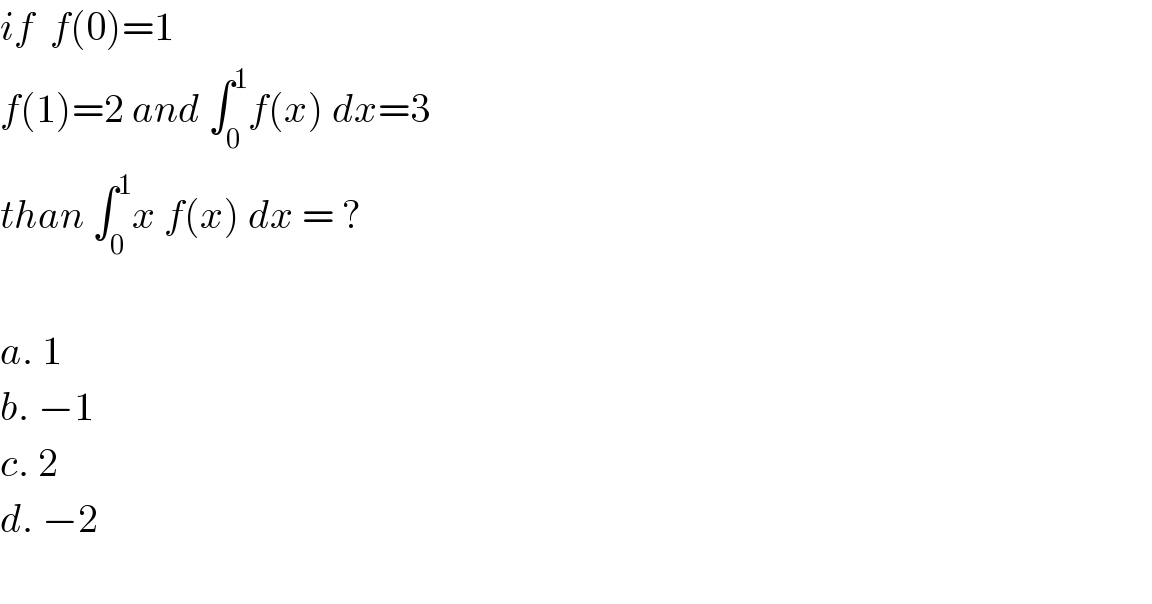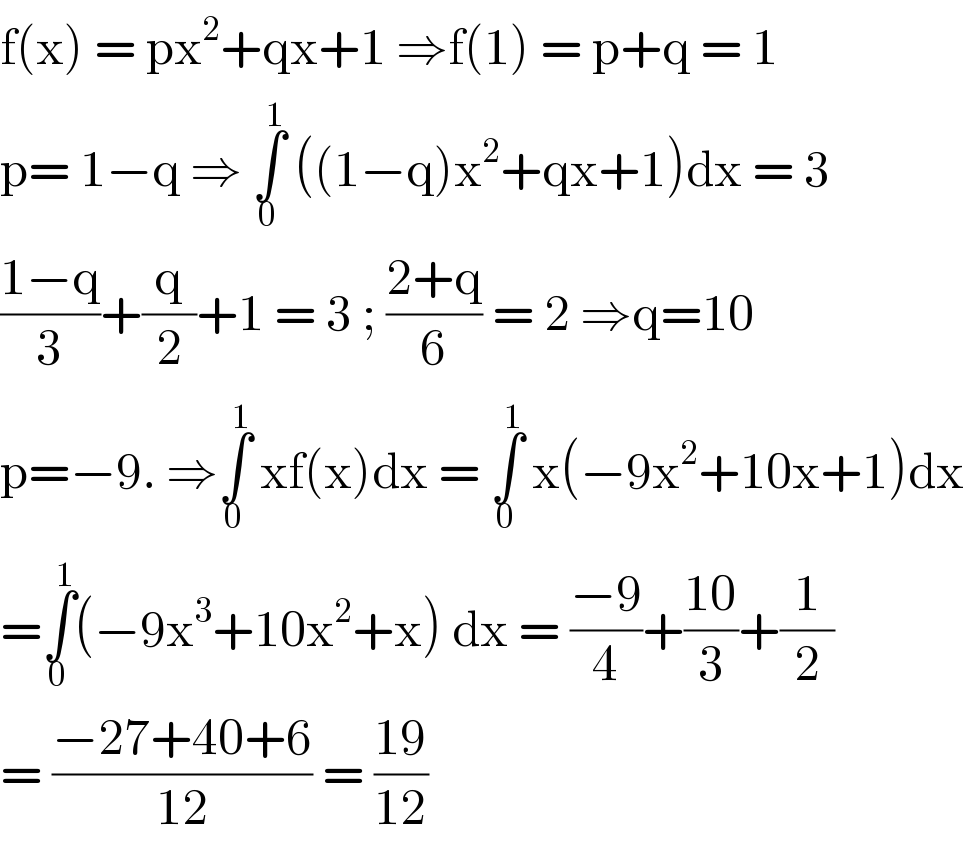
Question and Answers Forum
Question Number 95800 by rb222 last updated on 27/May/20

Commented by mr W last updated on 27/May/20

Commented by rb222 last updated on 27/May/20

Answered by bobhans last updated on 27/May/20

Commented by mr W last updated on 27/May/20

Commented by bobhans last updated on 28/May/20

